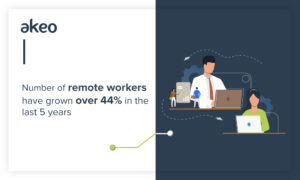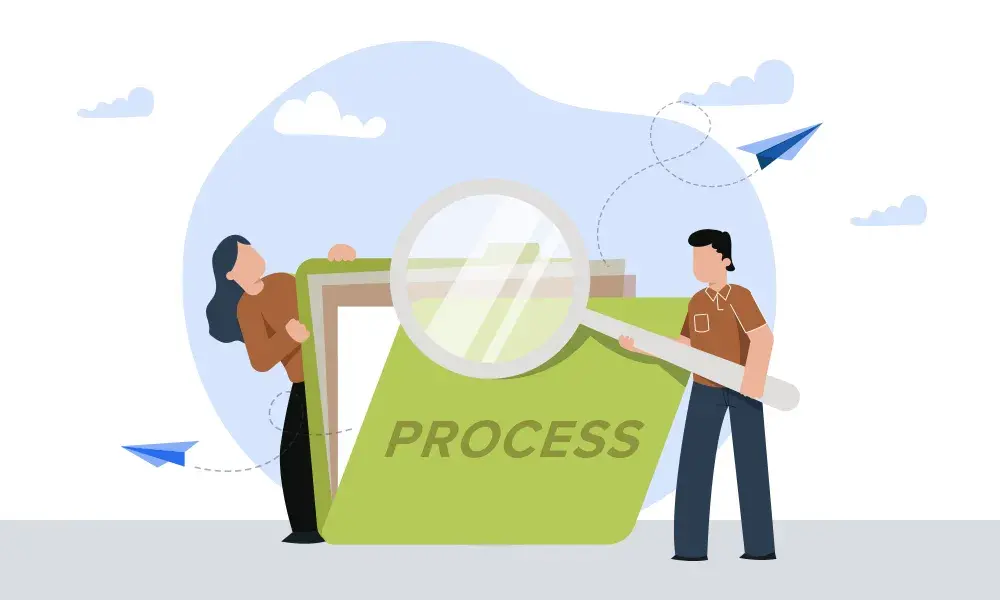In the Agile Methodology, the key to success is to work more smartly, generate more value from less work, and deliver it sooner.
According to Flexjobs, the number of remote workers has grown over 91% over the last 10 years and 159% in 12 years globally. With remote team hiring, organizations can access a diverse global talent pool which enables business continuity irrespective of time zone constraint. Global companies use remote-work outsourcing to gain access to IT resources, whereas SMEs or start-ups hire full-time remote employees to keep themselves lean.
With the massive increase in global remote hiring, how does one keep a tab on processes and tasks?

With start-ups and SMEs when the budgets are limited a little situation out of hand can lead to massive increase in cost. So, instead of concentrating on building and launching the “final product”, Akeo focuses on an “iterative approach”. With this approach, our teamwork on small, rapid releases of products in response to customer feedback and evolving requirements.
At Akeo, the Agile development process values:
- People and communication over processes and tools
- A working product over documentation
- Customer collaboration over contract negotiation
- Responding to change over following a plan
Agile practice isn’t limited to the development process in Akeo, Agile is being practiced by every department from sales to marketing, and even management. Agile is being used to inspire those who are working to accelerate change and add genuine value to the customer.
Why leverage Agile Practices on a remote IT/development team?
In the start-up world, it is often the timing of the product launch that defines its success. The accelerating speed of development not only affects client’s business but it affects Akeo’s business, too. So, we have adopted agile practices to respond more quickly to clients’ changing needs.
Our small, cross-functional teams are more visible and transparent than before, sparking increased value for our customers in a shorter amount of time.
Akeo Agile toolset for product development incorporates technologies for task management, collaboration, and progress reporting:
A once in a day collaboration is incredibly helpful when it comes to discussing quick feedback on the tasks, changes in the tasks as well as new requests. When working as a remote team, this becomes even more crucial for us.
- Task Management: A central task board in Scrum is vital to the Agile practice success. Assigned tasks can easily be modified and changed on a daily basis, this means a focused view on doing what is critical.
- Collaboration: Working together as a part of one development process offers the possibility of asking quick questions, sharing progress, or even communicating changes. This becomes especially critical in case of remote IT teams where meeting daily with the product owner is not possible.
- Progress Reporting: In the ideal methodology, there is a special toolkit specifically meant for project owners or stakeholders to check in on the development progress. What issues have come up? What new features have been requested? How has our timeline fluctuated? These questions should be answered by tool reporting and analytics.
By combining agile practices with development, we’ve enabled our teams to innovate rapidly, and solve customer problems more quickly especially in the case of remote development.
So, how did we get here?
How Akeo adopted Agile Practices
Every agile transformation is unique, but lessons learned in our own transformation could support yours, too. These were the key steps in our agile adoption:
1. Selecting Our Methodology for Agile: Scrum vs. Kanban
We began by determining which of primary methodologies would best support our agile development workflows: Scrum or Kanban. Scrum structures work in sprints, involving small tasks in response to change.
We found the sweet spot, balancing the need to focus on specific deliverable with our responsiveness to urgent customer and internal needs. Typical scrum sprints of 2-4 weeks were too long for our needs and didn’t suit. To keep it short and effective, in the beginning we started with 1-week sprints. However, after a while, we experienced that meetings were hindering the effectiveness of the team. Then we discussed having 3-4 week sprints, but that again is a far long period, and opens the door of failure in the development process. Finally we decided to stick to 2-week sprints as they were just enough to
- not be overload the team with meetings, and
- help us correct our actions in no-time.
2. Educating Stakeholders and Assigning Key Roles
At Akeo, we ensure that not only the team members, but project managers as well as product owners understand the impact of the traditional approach of development. Moreover, we decided not to “drop everything” the team is working on currently to work on a new urgent priority.
We know the value of scheduling and streamlining development work for days in order to enable a more effective work-flow and keep a tab on stages of development.
We streamline the agile process with a regular weekly occurrence of the “four ceremonies of Scrum”:
· Sprint Planning,
· Daily Standup,
· Sprint Review and Demo,
· and Retrospective.
3. Setting Up Agile Tools and Processes
Lastly, we set up the tools to support the agile process, such as user stories, sprints, and agile boards, where priorities are set together with the client. This is done before each sprint planning, so that the correct user stories are taken into the sprint. As discussed in the previous two blogs, well defined user-stories can easily help the team to work in-sync with each other and achieve goals much faster.
If you haven’t read them yet. You can read them here:
Scrum helps us to prioritize according to the customer, as he is the closest to the end-user and knows which stories are most important in the next release. It is a valuable tool, because you can re-prioritize your backlog as many times as you want, whereas in the waterfall methodology the development process and deliverables are pre-set, again making the different product launches wrong in terms of what the market expects.
What Agile Methodology means for projects and enterprise goals?
Today, agile practices enable us to be more responsive to changing requirements and priorities. Our team and project managers work more collaboratively, especially with our customers. Adopting agile practices can be transformative for the IT team, management processes, and enterprise as a whole as it offers increased transparency and visibility.



.jpg)


